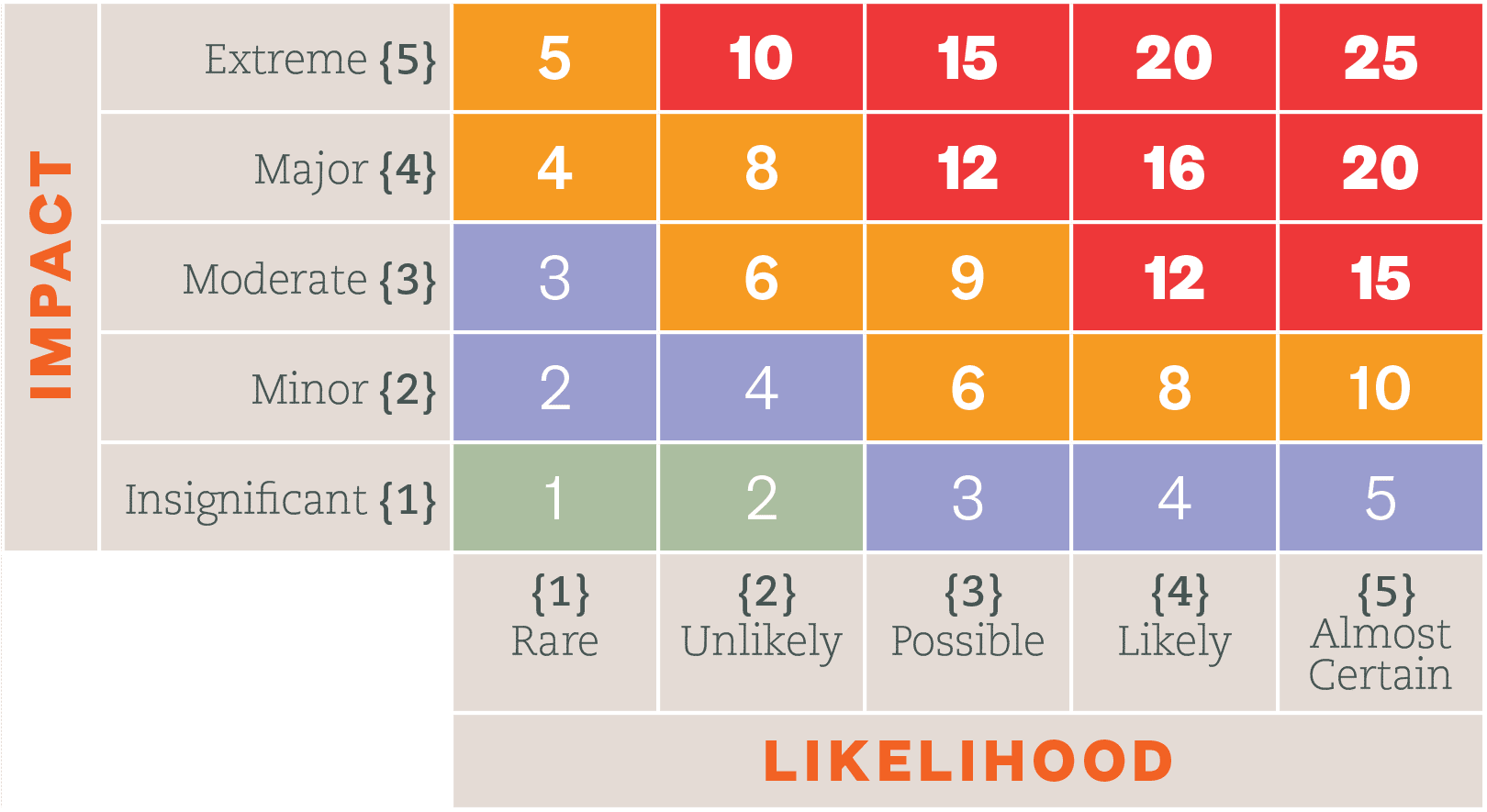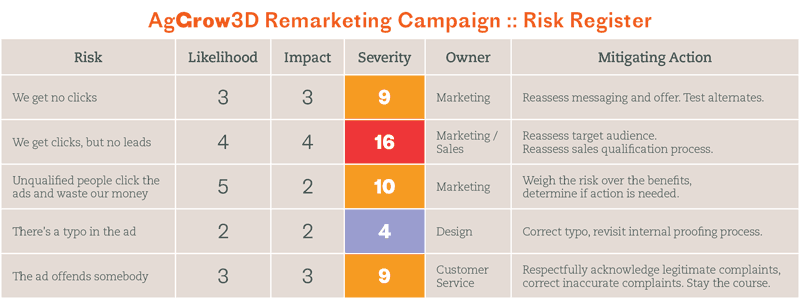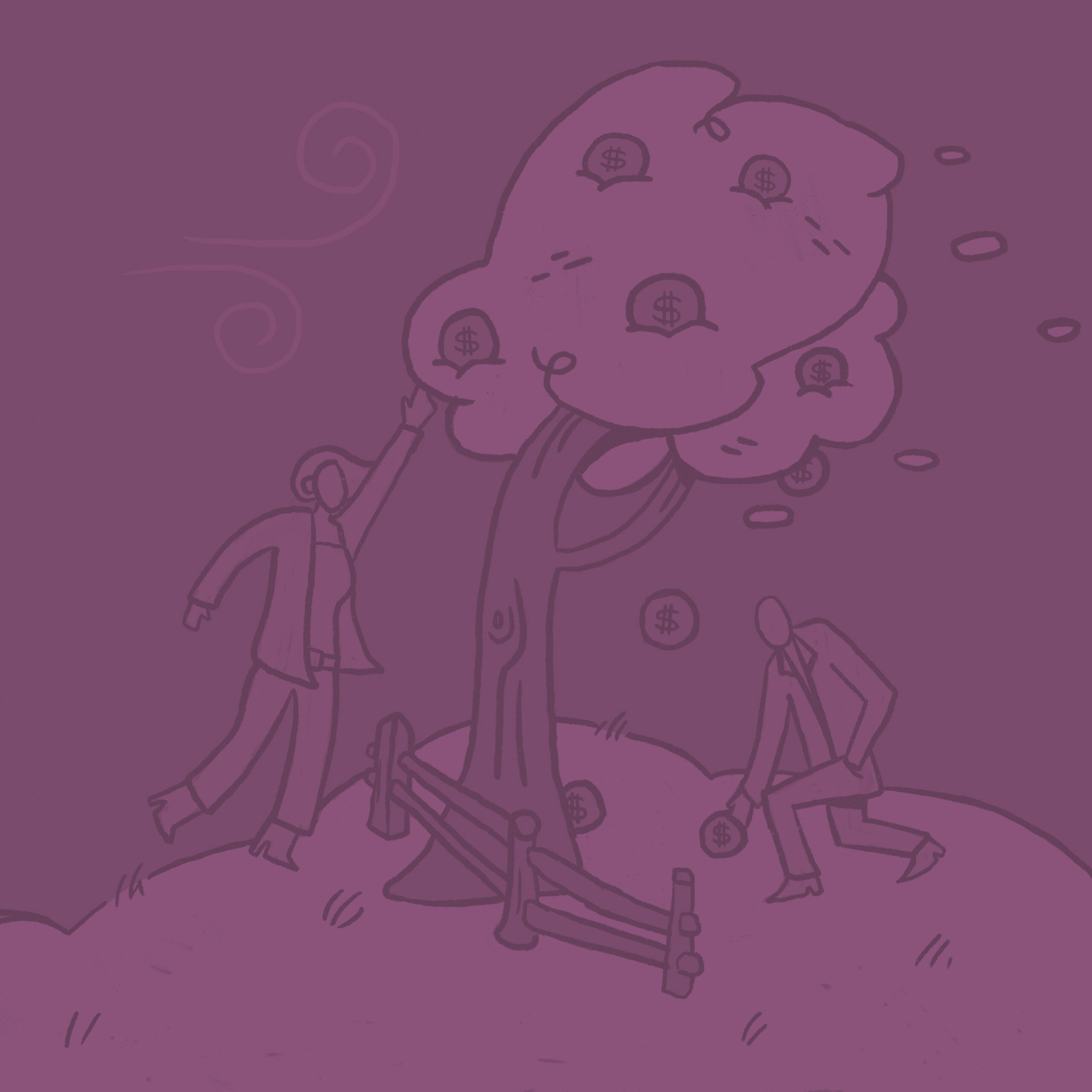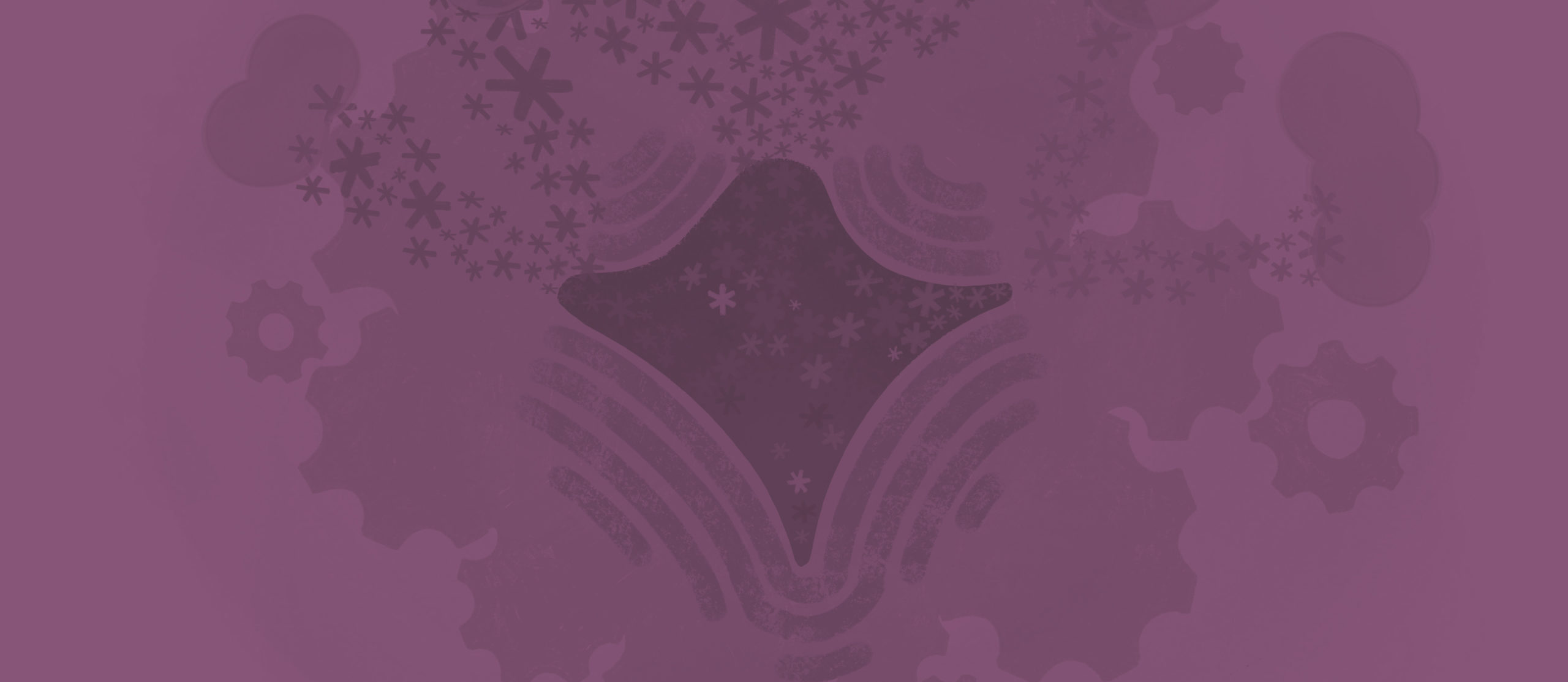Assessing risk without stifling innovation
Branding and marketing efforts are like most other types of endeavors — there’s always some risk involved. By nature, creative professionals tend to spend less time assessing risk on the front end and more time making course corrections on the back end if something does not work as expected.
Working with engineers, we’ve learned a lot about risk assessment, both its power to prevent failure and its potential to paralyze. Engineers are trained to look for what could go wrong. That’s a good thing. When engineers don’t do their jobs right, people might die. So, naturally, a lot of energy is spent assessing and mitigating risk.
At a recent meeting of the committee tasked with launching a nonprofit branding initiative, the conversation turned to what could go wrong. What if we don’t get enough volunteers? What if we don’t get enough participants? Are we being too ambitious? Who’s going to manage all this? As each concern was raised, one committee member diligently plotted them out on a risk register. This risk register was not an ethereal list of worries swirling around above everyone’s head. It was a spreadsheet she was updating in real time.
Engineers are trained to look for what’s wrong.
That’s a good thing.
The risk register
While commonplace in some project management circles, I had never heard of a risk register. Here’s what I learned:
Lauded by some and loathed by others, the risk register is a spreadsheet of everything you think could go wrong with a project. On a scale of one to five, you plot the risk’s likelihood on one axis and its potential impact on the other. Where your potential issue lands on the chart acts as a sort of oh-shit-o-meter, calculating the two values into a risk score between one and 25. Next, you document who owns the risk, what they’re doing now to prevent it and what actions they’ll take in the event the risk occurs.
Here’s the risk register scorecard:

The pragmatist in me loves this approach. The worrywart in me wants to curl up in a ball and rock back and forth in the corner. So I can totally understand the love/hate relationship with the risk register. At best, it helps ensure successful project deployment. At worst, it stifles innovation and unfairly rewards the road most-safely-traveled.
Whether a risk register helps or hurts a project all depends on how you use it.
A risk register is not a feasibility study
If a risk register is used to determine whether or not to do a project, that project is much less likely to see the light of day. If I ran a risk register on whether to get out of bed in the morning, I never would. Stepping out of the shower. Driving a car. Flesh-eating bacteria. Snakes. The world is full of things that could wrong. It’s best just to stay in bed.
Many of the boldest, most successful marketing efforts would not have survived a risk register process. That’s the art part of what we do. It’s critical not to let a risk register blunt the creative process. If you try to mitigate all the risk out of your marketing efforts, your risk of failing actually increases. In marketing, the safest road is never the best way to go.
However, after you’ve allocated funds and defined scope on a marketing project, a risk register can be a useful tool to uncover possible problems, assign individual responsibility and document mitigation efforts.
If I ran a risk register on whether to get out of bed in the morning, I never would.
Can the risk register work for marketing projects?
Curious if a risk register could benefit a marketing project, I ran the model for a few types of projects we often do for clients. The model below is for a remarketing campaign for the hypothetical B2B company, AgGrow3D.
Here’s how the campaign works: a previously unknown potential customer visits AgGrow3D’s website. A cookie is dropped onto the visitor’s device. Now, whenever they visit certain other websites, like news outlets and industry forums, an ad for AgGrow3D is displayed. The ad invites the viewer to return to the AgGrow3D website for some exclusive piece of content, like a white paper or product demo, in exchange for their contact information. The sales department then assesses the contacts and converts them into leads as appropriate.
AgGrow3D’s hypothetical risk register:

In this case, documenting potential risks can be helpful. It does not stifle creativity. It helps manage expectations for the campaign. And, most importantly, it documents a contingency plan if the campaign takes an unexpected turn. The best time for all parties to agree on what to do in a crisis is before the crisis hits.
In marketing, the safest road is never the best way to go.
Risk is its own reward
The risk register raises some deep philosophical questions. Does worrying about something bad happening make that bad thing more likely to happen? Does it make it less likely to happen? Or does it have no effect at all?
Exploring the risk register has forced me to think about risk in a more pragmatic, less emotional way. My takeaway: assessing risk is a good thing, so long as you still go on to take risks.
Assessing risk is a good thing, so long as you still go on to take risks.
Risk is an important and necessary element of your marketing ecosystem. If you calculate, assess and mitigate risk, it will benefit your bottom line. If you try to eradicate it, you’ll only create an entirely new, likely more severe, set of problems.
About Tom Campbell:
Tom is Toolbox’s co-founder and creative director. When he’s not keeping the ‘Box rocking, Tom can be found backstopping his beer league hockey team or playing drums for local bar bands. He’s also a founder and fairy godfather of Art Lab Fort Collins and keeper of TomLovesTheLibertyBell.com, a quirky repository of stories and stats on Liberty Bell replicas around the world.
About Toolbox Creative:
Toolbox Creative is a B2B Brand Engineering firm, helping mission-driven organizations assess their brand equity, clarify their positioning and amplify their voices — creating lasting impact and building brand love.



